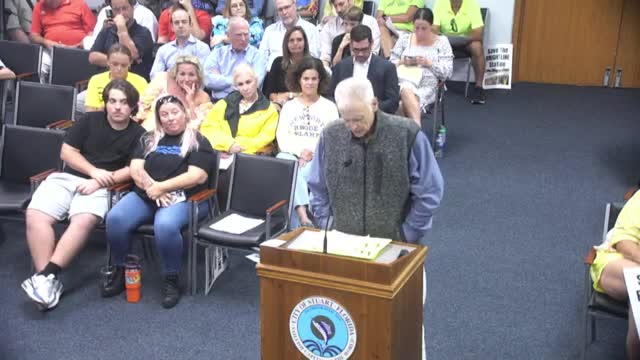Urban planning debate ignites over walkability and 15 minute cities
September 30, 2024 | City of Stuart, Martin County, Florida
This article was created by AI summarizing key points discussed. AI makes mistakes, so for full details and context, please refer to the video of the full meeting. Please report any errors so we can fix them. Report an error »

During a recent government meeting, discussions centered around urban planning strategies, particularly focusing on transit-oriented development and the concept of \"15-minute cities.\" Transit-oriented development aims to create dense communities around transportation hubs, encouraging public transport use and compact urban living.
The 15-minute city model promotes accessibility, allowing residents to reach work, shopping, education, healthcare, and leisure activities within a 15-minute walk, bike ride, or public transit journey. Cities like Portland, San Francisco, and Minneapolis were highlighted as successful examples of this approach in the United States.
However, the conversation took a critical turn as one speaker expressed skepticism about the feasibility of such urban planning concepts in their region, citing local climate conditions and social issues. The speaker dismissed the idea of walkability, arguing that the tropical climate makes walking impractical for much of the year. They also criticized the perception of new commissioners as needing guidance, suggesting a disconnect between local realities and urban planning ideals.
This meeting underscores the ongoing debate about urban development strategies and their applicability in diverse environments, raising questions about the balance between innovative planning and the practical needs of communities.
The 15-minute city model promotes accessibility, allowing residents to reach work, shopping, education, healthcare, and leisure activities within a 15-minute walk, bike ride, or public transit journey. Cities like Portland, San Francisco, and Minneapolis were highlighted as successful examples of this approach in the United States.
However, the conversation took a critical turn as one speaker expressed skepticism about the feasibility of such urban planning concepts in their region, citing local climate conditions and social issues. The speaker dismissed the idea of walkability, arguing that the tropical climate makes walking impractical for much of the year. They also criticized the perception of new commissioners as needing guidance, suggesting a disconnect between local realities and urban planning ideals.
This meeting underscores the ongoing debate about urban development strategies and their applicability in diverse environments, raising questions about the balance between innovative planning and the practical needs of communities.
View full meeting
This article is based on a recent meeting—watch the full video and explore the complete transcript for deeper insights into the discussion.
View full meeting